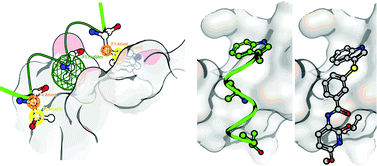De novo design of small molecule inhibitors targeting the LEDGF/p75-HIVintegrase interaction†
Abstract
The integration of the viral

- This article is part of the themed collection: Organic Collection: from theory to synthesis, from molecules to materials, catalysis and beyond

 Please wait while we load your content...
Please wait while we load your content...